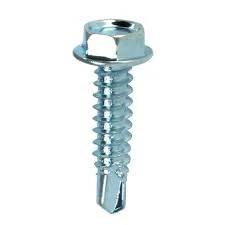Exploring the Benefits of Cross Bracing in Steel Structural Engineering Solutions
Cross Bracing in Steel Structures
Cross bracing is a widely adopted structural design element utilized in steel structures to enhance stability and load resistance. In engineering and architecture, bracing refers to the system of support that reinforces a structure to withstand lateral forces, such as wind and seismic loads. Cross bracing, in particular, effectively distributes these forces across a framework, ensuring structural integrity and safety.
The principle behind cross bracing lies in its configuration. The braces form an 'X' shape, connecting two non-adjacent corners of a structural frame, typically within a panel of a wall or between columns in a building. This unique arrangement provides diagonal support, which not only helps in maintaining the alignment of structural members but also increases the rigidity and stability of the overall framework.
One of the primary advantages of cross bracing is its ability to improve the performance of the structure under lateral loading conditions. When subjected to horizontal forces, such as those encountered during an earthquake or high winds, the cross braces work to transfer these loads through the structure, reducing the risk of failure or collapse. This adaptability to various loading conditions makes cross bracing an essential element in the design of tall buildings, bridges, and other large structures.
The materials used in cross bracing are typically high-strength steel, chosen for its superior strength-to-weight ratio and durability. Steel allows for slender designs that still provide significant load-bearing capacity. Furthermore, advancements in steel fabrication techniques and technology enable engineers to create precise and efficient cross-bracing systems that cater to the specific needs of a project.
cross bracing in steel structures

In addition to structural benefits, cross bracing can also contribute to the aesthetic appeal of a building. The visible diagonal elements can serve as an architectural feature, adding character and style to the façade. Many contemporary designs incorporate exposed cross bracing, enhancing visual interest while fulfilling critical structural functions.
Another important aspect of cross bracing is its cost-effectiveness. Compared to other reinforcement methods, such as moment-resisting frames, cross bracing can be more economical due to its simplicity and direct load path. The reduced material costs, coupled with simplified construction processes, make cross bracing an appealing choice for budget-conscious projects.
However, it's crucial to consider potential downsides. In certain applications, cross bracing can limit the flexibility of internal layouts due to the diagonal elements occupying valuable space. This can be problematic in buildings where open floor plans are desired. Additionally, if not properly designed, cross-braced systems can become vulnerable to buckling, particularly in areas subject to compression forces. Thus, careful engineering analysis is essential to ensure that the system will perform as intended throughout its lifecycle.
In conclusion, cross bracing is a fundamental technique in the realm of steel structures, providing essential support and stability against lateral forces. Its effectiveness, cost efficiency, and aesthetic potential make it a popular choice in modern architecture and engineering. As the industry continues to evolve, innovative approaches to cross bracing design and implementation will undoubtedly emerge, further enhancing the safety and sustainability of our built environment. By leveraging the advantages of cross bracing, engineers and architects are better equipped to create structures that meet the demands of today's dynamic loading conditions while offering enduring beauty and functionality.
-
Weatherproof Plastic Expansion Anchors for OutdoorNewsJun.06,2025
-
Sustainability in the Supply Chain: Eco-Friendly TEK Screws ProductionNewsJun.06,2025
-
Load-Bearing Capacity of External Insulation FixingsNewsJun.06,2025
-
Double Head Bolts: Enhancing Efficiency in Industrial MachineryNewsJun.06,2025
-
Corrosion Resistance in Chipboard Screws: Coatings for Wholesale DurabilityNewsJun.06,2025
-
Butterfly Toggle Bolts : Enhancing Structural ResilienceNewsJun.06,2025
